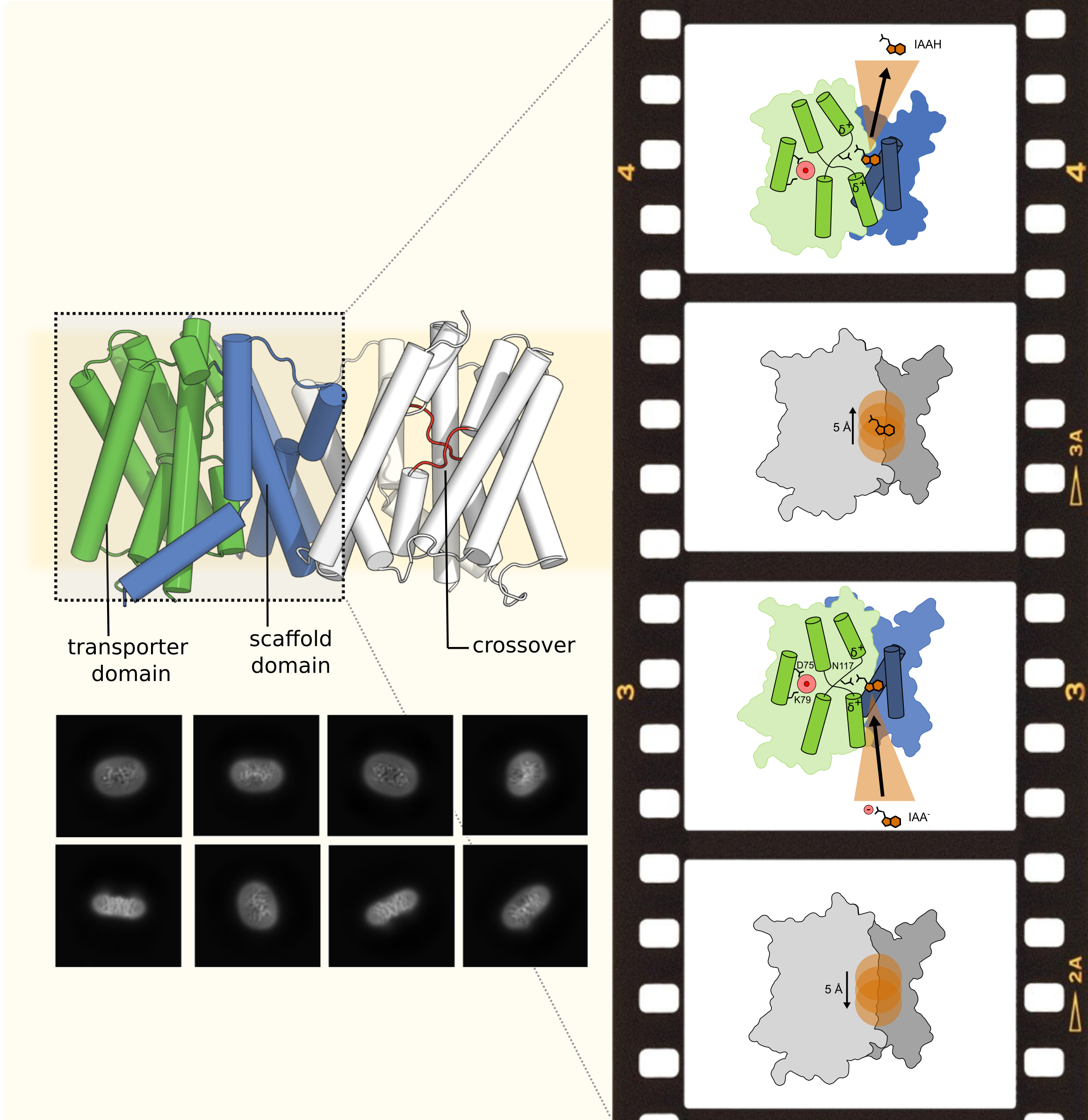
Auxins are hormones playing a central role and controlling nearly all aspects of plant growth and development. Charles Darwin observed that plants could grow directionally in response to environmental stimuli such as light or gravity. In his book, The Power of Movement in Plants, published in 1880, Darwin showed that the part of the plant responding to such a stimulus differs from the part that perceives it. He proposed that some kind of ‘influence’ must travel from the perception site to the response area. However, Darwin was unable to identify the influence.
Darwin's 'growth accelerating substance' was identified in 1926 as the hormone auxin. Later research identified that auxin is the growth factor that determines almost all plant responses to environmental changes. Directional transport of the auxin molecule between cells is required to ensure that the auxin response occurs in the correct part of the plant.
It wasn't until the 1990s that scientists identified the proteins involved in the process. PIN-FORMED (PIN) proteins are auxin transporters, and they are essential for the development of auxin gradients within plant tissues that guide plant growth. They're named from the distinct needle-like 'pin' form, without shoots or flowers, into which plants with dysfunctional PIN proteins grow. Even then, how PIN proteins fold, how they recognise substrates and inhibitors and the molecular mechanism behind transport have remained unknown.
Now researchers from Aarhus University and the Technical University of Munich have used single particle cryo-EM at eBIC to provide the first structural basis of auxin transport by PIN proteins. By combining three structures of Arabidopsis thaliana PIN8 with a comprehensive biochemical characterisation, their results finally provide the molecular mechanism behind auxin transport. They reveal an elevator-type transport mechanism similar to sodium/proton antiporters, bile acid/sodium symporters and bicarbonate/sodium symporters.
Their work provides a comprehensive molecular model for auxin recognition and transport by PINs and links and expands on a well-known conceptual framework for transport. In addition, it explains a central mechanism of polar auxin transport, a core feature of plant physiology, growth and development. Furthermore, their results offer insights into how a broad range of widely used herbicides, collectively known as synthetic auxins and anti-auxins, can be recognised by PIN proteins. It could therefore help to create more specific herbicides and minimise their environmental impact.
Ung, KL. et al. Structures and mechanism of the plant PIN-FORMED auxin transporter. Nature 609, 605–610 (2022). DOI: 10.1038/s41586-022-04883-y.
Diamond Light Source is the UK's national synchrotron science facility, located at the Harwell Science and Innovation Campus in Oxfordshire.
Copyright © 2022 Diamond Light Source
Diamond Light Source Ltd
Diamond House
Harwell Science & Innovation Campus
Didcot
Oxfordshire
OX11 0DE
Diamond Light Source® and the Diamond logo are registered trademarks of Diamond Light Source Ltd
Registered in England and Wales at Diamond House, Harwell Science and Innovation Campus, Didcot, Oxfordshire, OX11 0DE, United Kingdom. Company number: 4375679. VAT number: 287 461 957. Economic Operators Registration and Identification (EORI) number: GB287461957003.